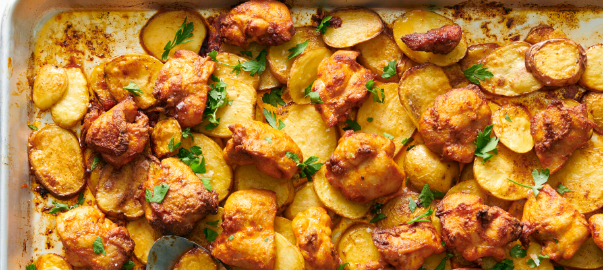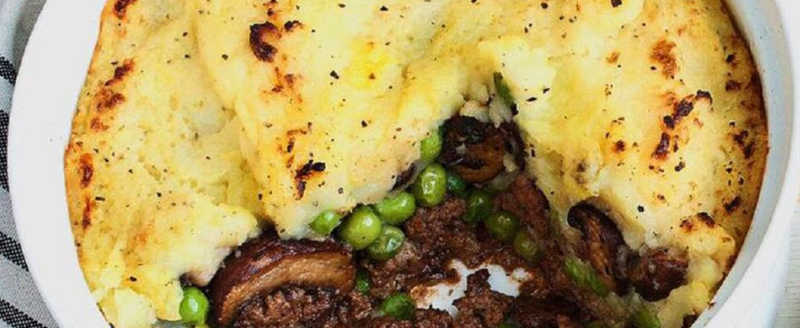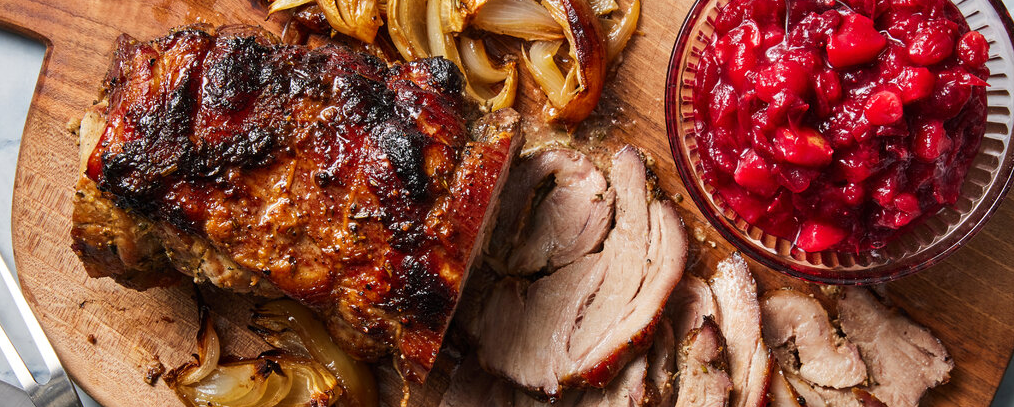Boneless Pork Ribs in Slow Cooker
Boneless Pork Ribs in a Slow Cooker: Step-by-Step Recipe, Cooking Time, and Sauce Ideas

As a chef, I often recommend pork loin to beginner and intermediate grillers because it’s lean, flavorful, and highly versatile. Unlike pork tenderloin, which is smaller and more delicate, pork loin is a thicker, broader cut—perfect for indirect heat and flavor layering. Grilling pork loin properly delivers a juicy interior with a flavorful crust, and with the right technique, it becomes a centerpiece worthy of any table.
- Why Pork Loin Is Perfect for Grilling
- Essential Ingredients and Equipment for Success
- Prepping the Pork Loin: Marinade vs. Dry Rub
- How to Grill a Pork Loin Step-by-Step
- Grilling Temperature and Internal Doneness Table
- How to Make Pork Loin in the Oven (Alternative Method)
- Stovetop Searing and Finishing in the Oven
- Can You Cook Pork Loin in a Pressure Cooker?
- Common Mistakes That Can Ruin Grilled Pork Loin
- Best Marinades, Glazes, and Sauces for Grilled Pork Loin
- Creative Flavor Variations I’ve Personally Tested
- How to Slice, Plate, and Serve Like a Chef
- Storage and Reheating Tips to Keep It Juicy
- What to Serve with Grilled Pork Loin
- What to Do With Leftover Pork Loin
- Pork Loin for Special Occasions: Tips for Impressive Results
- FAQ: 15 Chef-Backed Questions and Personal Recommendations

Why Pork Loin Is Perfect for Grilling
Pork loin does require care: it’s lean, so overcooking can lead to dryness. But that’s why grilling is such a smart approach—you control the heat and can easily apply smoke, char, or caramelization. With just a few essential steps, pork loin becomes one of the most impressive yet simple proteins to master on the grill.
Essential Ingredients and Equipment for Success
Here’s what I recommend having on hand:
Ingredients:
- 2–3 lb boneless pork loin roast
- Kosher salt and freshly ground black pepper
- Olive oil or neutral oil
- Garlic powder, onion powder, smoked paprika (optional)
- Marinade or dry rub (homemade or store-bought)
- Optional glaze: honey, mustard, or BBQ sauce
Equipment:
- Charcoal or gas grill with lid
- Meat thermometer (essential!)
- Grill tongs
- Basting brush
- Aluminum foil
- Small bowl and whisk (for marinades or glazes)
These basics ensure you have everything you need to cook safely and achieve ideal texture and flavor.
Prepping the Pork Loin: Marinade vs. Dry Rub
Whether I’m preparing for a backyard cookout or a private dinner event, I start with the same question: should I marinate or dry rub the pork? Both are excellent, but they serve different purposes.
For marinades, I combine acidic elements like citrus juice or vinegar with oil, garlic, mustard, herbs, and a touch of sweetness like honey or maple syrup. I marinate the pork loin in the refrigerator for 4 to 12 hours, turning it occasionally to ensure even flavor. This tenderizes the meat and enhances juiciness.
For a dry rub, I mix salt, pepper, garlic powder, paprika, brown sugar, and sometimes fennel seed or mustard powder. I pat the loin dry and apply the rub generously, pressing it into the surface. I let it sit at room temp for 30–45 minutes before grilling, which allows the seasoning to penetrate and the meat to cook evenly.
Both approaches are valid—what matters is the balance of flavor and how much prep time you have.

How to Grill a Pork Loin Step-by-Step
Grilling pork loin is about managing heat and patience—not speed. Here’s how I do it:
- Preheat the grill to 375–400°F (190–204°C), setting up two-zone heat: one side direct, one indirect.
- Sear the pork over direct heat for 2–3 minutes per side until nicely browned.
- Move to indirect heat, close the lid, and grill for 45–60 minutes, depending on the size.
- I turn the loin every 10–15 minutes for even cooking.
- At around 130°F (54°C), I begin glazing if using a sauce, brushing every 5–10 minutes.
- I pull the loin off the grill at 140–145°F (60–63°C), then rest it for at least 10–15 minutes.
The result is a juicy, evenly cooked pork loin with a crusty exterior and tender interior. Slicing is easy, and the flavor is deep without being overpowering.
Grilling Temperature and Internal Doneness Table
| Internal Temp | Doneness | Description | Chef’s Recommendation |
| 130°F (54°C) | Rare (unsafe) | Undercooked for pork | Avoid |
| 140°F (60°C) | Medium | Slightly pink, juicy | Ideal balance of texture & safety |
| 145°F (63°C) | Medium-Well | Just pink at center | USDA recommended minimum |
| 150°F+ | Well Done | Fully cooked, drier texture | Avoid if possible for loin |
Always rest the meat after grilling—internal temperature will rise 5–10 degrees as it sits.

How to Make Pork Loin in the Oven (Alternative Method)
If grilling isn’t an option, I recommend oven-roasting. I preheat the oven to 375°F (190°C), place the seasoned pork loin on a rack inside a roasting pan, and cook uncovered for 50–60 minutes. I baste or glaze it occasionally, and check the internal temp starting at 40 minutes. Once it reaches 140–145°F, I remove it and rest before slicing.
It’s not as smoky as grilling, but it still produces a beautiful, juicy roast with minimal effort.
Stovetop Searing and Finishing in the Oven
For smaller pork loins or those under 2 lbs, I often sear in a cast-iron pan for 3–4 minutes per side, then transfer the whole pan to a 350°F (177°C) oven and finish cooking. It’s fast, controlled, and produces excellent caramelization.
This method is great when I want to cook pork loin quickly without firing up the grill or relying solely on dry heat.
Can You Cook Pork Loin in a Pressure Cooker?
Yes—and I’ve used this approach many times. Pressure cooking is perfect for marinated pork loin. I sear the meat on sauté mode first, then add broth, aromatics, and cook at high pressure for 18–22 minutes, followed by a 10-minute natural release.
I find this produces a very tender roast, though it lacks the crust and smokiness of grilled pork. I often finish it under the broiler or on a hot pan for better texture.

Common Mistakes That Can Ruin Grilled Pork Loin
Grilling pork loin isn’t difficult, but there are a few critical mistakes I’ve seen home cooks make over and over again. The biggest? Overcooking. Pork loin is lean—there’s very little intramuscular fat to keep it moist. Once it passes 150°F (66°C), the texture starts to toughen, and by 160°F (71°C), it’s often dry and grainy. That’s why I always cook to temperature, not time, and use an instant-read thermometer.
Another mistake is not resting the meat. I’ve had clients complain that their pork turned dry even though they didn’t overcook it—only to learn they sliced it right off the grill. Always let it rest 10–15 minutes under foil to lock in juices.
Finally, avoid using sugary marinades or glazes too early. They’ll burn over direct heat. I always apply sweet glazes during the last 15 minutes of cooking, not before.
Best Marinades, Glazes, and Sauces for Grilled Pork Loin
The beauty of pork loin is how well it absorbs and balances flavor. Over the years, I’ve developed a few go-to marinades that never fail.
- Citrus-Herb Marinade: Olive oil, lemon juice, rosemary, garlic, and Dijon. Bright and refreshing.
- Maple-Mustard Glaze: Equal parts maple syrup and whole grain mustard with a splash of apple cider vinegar. Sweet and tangy.
- Soy-Ginger Marinade: Soy sauce, sesame oil, garlic, ginger, brown sugar. Asian-inspired and deep in umami.
I often pair pork with a finishing sauce like balsamic reduction, apple butter BBQ, or a green herb chimichurri. The key is balancing sweet, acid, and salt—and applying sauces in layers, not drowning the meat.
Creative Flavor Variations I’ve Personally Tested
One of the joys of working with pork loin is how adaptable it is to global flavors. Over time, I’ve developed reliable variations that transform the same base cut into totally different dishes.
- Mediterranean-style: I rub the loin with za’atar, lemon zest, and olive oil, and serve with grilled vegetables and yogurt sauce.
- Caribbean jerk: I use allspice, thyme, scallions, scotch bonnet, and a splash of lime. Marinate overnight and grill low and slow.
- Honey Sriracha glaze: Sweet heat that caramelizes beautifully on the grill. A favorite at casual backyard dinners.
These are not one-off experiments—I’ve served them at events, tested them in menu development, and recommend them with confidence.
How to Slice, Plate, and Serve Like a Chef
One of the most common things I see—even from experienced home cooks—is beautifully cooked meat ruined by poor slicing. When I slice pork loin, I always go against the grain, cutting across the muscle fibers rather than parallel to them. This small detail makes a big difference: the pork becomes more tender in every bite.
After resting the meat (which is non-negotiable), I place the roast on a carving board and slice it into ¼- to ½-inch medallions, depending on the presentation. For an elegant dinner, thinner is better. For casual meals or family-style plating, a thicker slice offers more bite.
In terms of plating, I usually fan the slices in a slightly overlapping pattern across the plate. This not only looks clean and professional—it also makes it easy to spoon sauce or glaze in a controlled way. I apply sauce around the pork, not over it, so the crust remains intact and the glaze stays glossy.
To finish, I use small visual accents: a few sprigs of fresh thyme, a lemon wedge, or even a sprinkle of finishing salt just before serving. These tiny touches transform a home-cooked dish into a restaurant-worthy plate.
Storage and Reheating Tips to Keep It Juicy
Proper storage and reheating are just as important as cooking when it comes to preserving flavor and texture. Once the pork loin has cooled to room temperature—usually within 30–45 minutes after serving—I slice it and store it in an airtight container. I make sure to add a bit of pan sauce, glaze, or broth to help retain moisture.
In the refrigerator, the pork keeps well for up to 4 days. For longer storage, I wrap individual slices or portions tightly in plastic wrap, then place them in a zip-top freezer bag. They’ll last up to 3 months in the freezer without significant texture loss.
When it’s time to reheat, I do so gently. My favorite method is in a 350°F (177°C) oven, covered with foil and a splash of liquid—about 10–15 minutes. On the stovetop, I use a nonstick or cast-iron skillet with a lid, low heat, and a teaspoon of broth or water. If I must use the microwave, I go with 50% power, 30 seconds at a time, covered with a damp paper towel. The goal is to warm the meat without drying or recooking it.
What to Serve with Grilled Pork Loin
The best sides don’t just complement grilled pork loin—they elevate it. Over the years, I’ve tested many combinations, and I’ve found that contrast is key. Since pork loin is mild and lean, I usually pair it with something creamy, something acidic, and something crunchy.
For classic comfort, I love serving it with garlic mashed potatoes or creamy polenta, along with roasted carrots, asparagus, or green beans tossed in lemon zest and olive oil. The richness of the mash balances the meat, and the greens add color and freshness.
In summer, I shift to lighter fare: grilled corn salad, cucumber slaw, or arugula with peaches and balsamic glaze. These pairings provide sweetness and acidity to contrast the pork’s savoriness.
Grain-based sides like farro, wild rice, or herbed couscous work beautifully too. I often use the same herbs from the pork rub in the grains to create harmony on the plate. And don’t forget bread—grilled sourdough or flatbread is excellent for soaking up leftover sauce.
What to Do With Leftover Pork Loin
Leftover pork loin might just be one of my favorite ingredients to work with. It’s versatile, already cooked, and holds its structure well. I often slice it thin and make grilled sandwiches with arugula, mustard, and pickled onions on ciabatta or sourdough. When reheated gently, it becomes the perfect filling for tacos, wraps, or paninis.
Another dish I make often is pork fried rice. I dice the leftover loin, quickly sauté it with rice, veggies, egg, and soy sauce. It’s fast, satisfying, and packed with flavor.
For something lighter, I toss the pork into grain bowls with quinoa, roasted vegetables, and a citrus vinaigrette. It also works beautifully in hearty green salads, especially with apples, walnuts, and goat cheese.
If I’m preparing meals ahead, I portion the pork into containers with rice and vegetables, then freeze them for the week. The meat reheats beautifully and becomes a convenient protein base for lunches or quick dinners.
Pork Loin for Special Occasions: Tips for Impressive Results
When I’m cooking pork loin for guests or special events, I take a few extra steps to elevate the result. First, I choose a larger roast—closer to 3 or 4 pounds—so there’s enough for everyone and leftovers. I also invest a little more time in dry-brining: rubbing the meat with salt and letting it rest uncovered in the fridge for 12–24 hours. This helps season the inside and improves moisture retention.
I often butterfly the loin and stuff it with herbed goat cheese, sautéed spinach, or apples and onions, then roll and tie it before grilling over indirect heat. This adds flavor and makes a stunning cross-section when sliced.
For visual impact, I use a sweet-savory glaze like honey-mustard or maple-balsamic brushed on in the final 15 minutes of cooking. After resting, I slice and fan the pieces out on a platter, drizzle extra sauce around the edge, and garnish with microgreens or edible flowers.
The secret isn’t just in how you cook it—but how you present it with intention.
FAQ: 15 Chef-Backed Questions and Personal Recommendations
Should I remove the fat cap from the pork loin before grilling?
I recommend trimming most of it, but leaving a thin layer helps retain moisture. I’ve found that a ¼-inch fat cap protects the meat and renders nicely over the grill.
Can I grill pork loin without marinating it?
Yes. I’ve often done simple salt, pepper, and garlic rubs and still had great results. Just let it rest at room temp before cooking and season generously.
What wood chips do you recommend for smoking flavor?
I’ve tried apple, cherry, and hickory—apple is my go-to for pork loin. It’s sweet, subtle, and enhances the meat without overpowering it.
How do I keep the meat from sticking to the grill?
Make sure the grates are clean and well-oiled. I use a folded paper towel dipped in oil and tongs to wipe the grates before placing the meat. Also, don’t move it too soon—wait for a crust to form.
What’s the biggest mistake when grilling pork loin?
Overcooking. I’ve ruined a few loins early in my career by relying on time instead of a thermometer. Always pull it at 140–145°F and let it rest.
Can I use the same method for pork tenderloin?
No—the tenderloin is smaller and cooks faster. I grill tenderloin at higher heat for less time (15–20 minutes total). The internal temperature goal is still 140–145°F.
How do I get grill marks without burning the glaze?
I apply glaze after the first sear or in the last 15 minutes of indirect grilling. High sugar content can burn fast if applied too early.
Should I brine pork loin before grilling?
It’s optional, but I’ve done it with excellent results. A 4-hour brine in saltwater (with herbs or citrus) adds moisture and flavor. Just reduce salt in the rub or marinade accordingly.
How do I rest the meat properly?
I remove it from the grill, tent loosely with foil, and let it rest 10–15 minutes. This lets juices settle and prevents dryness.
Can I stuff a pork loin before grilling?
Yes, and I’ve done it for special occasions. Butterfly the loin, fill with spinach, cheese, or herbs, roll and tie it tightly, then grill indirectly until cooked through.
Can I use leftover grilled pork in other dishes?
Absolutely. I slice it for sandwiches, dice into fried rice, layer in tacos, or add to pasta with a mustard cream sauce. Leftovers are never wasted.
What internal temp is safe for pork?
The USDA recommends 145°F with a 3-minute rest. On my experience, pulling at 140°F and letting it rest gives the best balance of safety and juiciness.
How long should I marinate the pork?
If acidic (like vinegar or citrus), I go 4–6 hours max. For oil-based marinades, I’ve marinated up to 24 hours without issue.
How do I know the grill is at the right temp?
I use a thermometer, but a hand test works too—if you can hold your hand over the grill 5 inches above the grate for 4–5 seconds, it’s around medium-high.
What’s your personal favorite pork loin recipe?
One I always go back to: Dijon mustard, rosemary, garlic, lemon zest, and olive oil. I grill it slowly and glaze it with a honey-wine reduction. It’s balanced, aromatic, and never fails to impress.



Post Comment